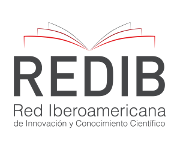Pesticide sorption and desorption from soils having different land use
Caracterización de la sorción y desorción de herbicidas en suelos con diferentes tipos de ocupación
DOI:
https://doi.org/10.15446/ing.investig.v28n3.15127Keywords:
agrochemical product, pesticide, contamination, water, sorption, desorption, organic matter, buffer zone (en)plaguicidas, contaminación, agua, sorción, desorción, materia orgánica, zonas amortiguadoras (es)
Downloads
This study was carried out within the framework of a multidisciplinary project for evaluating buffer zones for combating pesticide contamination of surface water. Such areas are effective in removing pesticides transported by run-off; however, little information is available about the fate of the pesticides so intercepted. Two herbicides having contrasting properties (isoproturon, moderately hydrophobic (log Kow = 2.5), diflufenican, strongly hydrophobic (log Kow = 4.9)) and isopropylaniline (an isoproturon metabolite) were used for characterising sorption and desorption from soil having three different land uses: grass buffer strip, woodland and cultivated plot. The experiments were carried out in controlled laboratory conditions using isoproturon labelled with 14C in the benzene ring. The results demonstrated that diflufenican and isopropilaniline retention was more significant than isoproturon in three soils. The three molecules’ Kd values revealed that isoproturon and diflufenicanil retention was more important in woodland soil where carbon content was more significant (ZB 0-2: Kd IPU = 15.1 Ls kg-1; Kd DFF = 169.2 Ls kg-1). Isopropilanilina Kd was higher in grass buffer strip soil (BE 0-2: Kd IPA = 53.1 L kg-1). These differences were related to different organic matter content and nature according to the type of land use.
Este trabajo se realizó dentro del marco de un proyecto multidisciplinario sobre la evaluación de la utilización de zonas amortiguadoras como uno de los mecanismos para combatir la contaminación de aguas superficiales por plaguicidas. Estas zonas son eficaces para detener los plaguicidas transportados en las escorrentías, pero no existe mucha información sobre el futuro de las moléculas interceptadas. En el trabajo se evaluó la sorción y la desorción de dos herbicidas con propiedades muy diferentes: el isoproturon, moderadamente hidrófobo (log Kow = 2,5), la diflufenicanil, fuertemente hidrófobo (log Kow = 4,9), y la isopropilanilina, un metabolito de la isoproturon, en suelos con diferentes tipos de ocupación, barreras de hierba, zonas arboladas y parcelas de cultivo. Los experimentos se realizaron en laboratorio utilizando las moléculas marcadas con 14C. Los resultados muestran que la diflufenicanil y la isopropilanilina son más retenidos que el isoproturon en los tres suelos. Los valores de Kd de las tres moléculas revelan que la sorción del isoproturon y la diflufenicanil es más fuerte en el horizonte superficial de la zona arbolada, donde el contenido de carbono es más importante (ZB 0-2: Kd IPU = 15,1 L kg-1; Kd DFF = 169,2 L kg-1). En el caso del isopropilanilina, el Kd más elevado es determinado en el horizonte superficial de la barrera de hierba (BE 0-2: Kd IPA = 53.1 L kg-1). Estos resultados están relacionados con el diferente contenido y naturaleza de materia orgánica de acuerdo con el tipo de ocupación del suelo.
References
AFNOR., Qualité des sols. Analyse granulométrique par sédimentation., Méthode de la pipette. Norme expérimentale (X 31- 107 Juillet 1983). Vol. 2, 1999, pp. 57-71.
Baker, J. L., Mickelson, S. K., Hatfield, J. L., Fawcett, R. S., Hoffman, D. W., Franti, T. G., Peter, C. J., Tierney, D. P., Reducing herbicide runoff: role of best management practices., British Crop Prot. Conf. - Weeds - BCPC Publications, Farnham, 1995, pp. 479-487.
Barriuso, E., Benoit, P., Houot, S., Charnay, M. P., Matière organique des sols et micropolluants organiques., La matière organique dans les milieux naturels. Actes des neuvièmes journées du Diplôme d’Etudes Approfondies Sciences et techniques de l’environnement. Université Paris Val de Marne - Ecole National des Ponts et Chaussées -ENGREF. Mai 14-15 1998, Paris.
Beck, A. J., Lam, V., Henderson, D. E., Beven, K. J., Harris, G. L., Howse, K. R., Johnston, A. E., Jones, K. C., Movement of water and the herbicides atrazine and isoproturon through a large structured clay soil core., J. Contam. Hydrol. Vol 19, 1995, pp. 237-260. DOI: https://doi.org/10.1016/0169-7722(95)00016-O
Benoit, P., Barriuso, E., Vidon, Ph., Réal, B., Isoproturon sorption and degradation in a soil from grassed buffer strip., J. Environ. Qual., Vol. 28, 1999, pp. 121-129. DOI: https://doi.org/10.2134/jeq1999.00472425002800010014x
Bishop, J. D., Knezovich, J. P., Harrison, L. F., Behavior of phenol and aniline on selected sorbents and energy-related solid wastes., Water, Air and Soil Pollution, Vol. 49, 1990, pp. 93-106. DOI: https://doi.org/10.1007/BF00279513
Bollag, J., Blattmann, P., Laanio, T., Adsorption and transformation of four substituted anilines., Soil. Am. Soc. Chem. Vol. 78, 1978, pp. 1426-1302. DOI: https://doi.org/10.1021/jf60220a011
Boyd, S. A.; Mikesell, M. D., Lee, J. F., Chlorophenols in soils., In S.A. Whney. and K. Brown. Reactions and movement of organic chemicals in soils. Wisconsin USA: SSSA Special Publication N° 22, 1989.
Calvet, R., Adsorption of organic chemicals in soils., Environ. Health Perspec., Vol. 38, 1989, pp. 145-177. DOI: https://doi.org/10.1289/ehp.8983145
Calvet, R., Adsorption-desorption phenomena. In: Interactions between herbicides and soil., Edited by R.
J., Hance, London: Acadelic Press,1981, pp. 1-29.
Chassin, P. y Calvet, R., Rétention des molécules herbicides dans les sols., Réflexions sur le rôle des matières organiques. In INRA Publ., Comportements et effets secondaires des pesticides dans les sols, Vol. 31 des
Colloques de l'INRA, 1985, pp. 125-133.
Chiou, C. T., Kille, D. E., Effects of polar and non-polar groups on the solubility of organic compounds in soil organic matter., Environ. Sci. Technol., Vol. 28, 1994, pp.1139-1144. DOI: https://doi.org/10.1021/es00055a026
Clausen, L., Fabricius, I., Atrazine, isoproturon, mecoprop, 2,4-D, and bentazone adsorption onto iron oxides., J. Environ. Qual., Vol. 30, 2001, pp. 858-869. DOI: https://doi.org/10.2134/jeq2001.303858x
Coquet, Y., y Barriuso, E., Spatial variability of pesticide adsorption within the topsoil of small agricultural catchment., Agronomie, Vol. 22, 2002, pp. 389-398. DOI: https://doi.org/10.1051/agro:2002017
Conte, E. Morali, G., Galli, M., Imbroglini, L. Ch., Long-term degradation and potential plant uptake of diflufenican under field conditions., J. Agric. Food Chem. Vol. 46, 1998, pp. 4766- 4770. DOI: https://doi.org/10.1021/jf980190l
Dao, T. H., Lavy, T. L., A kinetic study of adsorption and degradation of aniline benzoic acid, phenol, and diuron in soil suspensions., Soil Sci., Vol. 143, 1987, pp. 66-72. DOI: https://doi.org/10.1097/00010694-198701000-00010
Hasset, J. J., Banwart, W. L., Griffin, R. A., Correlation of compound properties with sorption characteristics of non-polar compounds by soils and sediments: concepts and limitations., In: Environment and soil wastes.
Francis C. W., and Auerbach S. I., Eds., Butterworth, Boston, 1983, pp. 161-178.
Haynes, C., Kirkwood, R., Studies on the mode of action of diflufenican in selected crop and weed species: basis of selectivity of pre- and early postemergence applications., Pestic. Sci. Vol. 35, 1992, pp. 161-165.
Giles, C. H., MacEwan, T. H., Nakhwa, S. N., Smith, D., Studies in adsorption. Part XI. A system of classification of solutions adsorption isotherms, and its use in diagnosis of adsorption mechanisms and measurement of specific surface of solids., J. Chem. Soc., Vol. 3, 1960, pp. 3973-3993. DOI: https://doi.org/10.1039/jr9600003973
Guggenberger, G., Zech, W., Soil organic matter composition under primary forest, pasture, and secondary forest succession, region Huetar Norte, Costa Rica., Forest Ecol. Manag., Vol. 124, 1999, pp. 93-104. DOI: https://doi.org/10.1016/S0378-1127(99)00055-9
Hamaker, J. W. Thompson, J. M., Organic Chemicals in the Soil Environment., Vol. 1, 1972. C.A.J. Goring and J.W. Hamaker (ed). Marcel Dekker, NY, pp. 49-143.
Hasset, J. J., Banwart, W. L., Griffin, R. A., Correlation of compound properties with sorption characteristics of non-polar compounds by soils and sediments: concepts and limitations. In: Environment and soil wastes., Francis C. W., et Auerbach S. I., Eds., Butterworth, Boston. 1983, pp. 161-178.
Haynes, C., Kirkwood, R., Studies on the mode of action of diflufenican in selected crop and weed species: basis of selectivity of pre- and early postemergence applications., Pestic. Sci. Vol. 35, 1992, pp. 161-165. DOI: https://doi.org/10.1002/ps.2780350210
Hsu, T-S., Bartha, R., Interaction of the pesticide-derived chloroaniline residues with soil organic matter., Soil Sci., Vol. 116, 1974, pp. 444-452. DOI: https://doi.org/10.1097/00010694-197312000-00008
Kumar, Y., Ghosh, D., Agnihotri, A. K., Adsorption of isoproturon on homoionic clays., J. Indian Soc., Soil Sci., Vol. 35, 1987, pp. 394-399.
Lehr, S., Scheunert, I., Besse, F., Mineralization of free and cell wall-bound isoproturon in soil in relation to soil microbial para meters., Soil Biol. Biochem., Vol. 28, 1996, pp. 1-8. DOI: https://doi.org/10.1016/0038-0717(95)00099-2
Madsen, L., Lindhardt, B., Rosenberg, P., Clausen, L., Fabricius, I., Pesticides sorption by low organic sediments: a screening for seven herbicides., J. Environ. Qual., Vol. 29, 2000, pp. 1488- 1500. DOI: https://doi.org/10.2134/jeq2000.00472425002900050016x
Nemeth-Konda, L., Füleky, G., Morovjan, Gy., Cookan, P., Sorption behaviour of acetochlor, atrazine, carbendazim, diazinon, imidacloprid and isoproturon on Hungarian agricultural soil., Chemosphere, Vol. 48, 2002, pp. 542-552. DOI: https://doi.org/10.1016/S0045-6535(02)00106-6
Pantani, O. L., Dousset, S., Schiavon, M., Fusi, P., Adsorption of isoproturon on homoionic clays., Chemosphere, Vol. 35, 1997, pp. 2619-2626. DOI: https://doi.org/10.1016/S0045-6535(97)00335-4
Patty, L., Réal, B., Gril, J., The use of grassed buffer strips to remove pesticides, nitrate and soluble phosphorus compounds from runoff water., Pestic. Sci. Vol. 49, 1997, pp. 243-251. DOI: https://doi.org/10.1002/(SICI)1096-9063(199703)49:3<243::AID-PS510>3.0.CO;2-8
Patty, L., Limitation du transfert par ruissellement vers les eaux superficielles de deux herbicides (isoproturon et diflufenicanil). Méthodologie analytique et étude de l’efficacité des bandes enherbées., Thèse de Doctorat de l’Université Joseph-Fourier Grenoble, 1997.
Paya-Péréz, A. B., Pelusio, F., Sorption of 3,4,5-trichloroaniline in a soil profile., The Sci. of the Total Environ., Vol. 123/124, 1992, pp. 519-529. DOI: https://doi.org/10.1016/0048-9697(92)90174-Q
Pedersen, H. J., Kusdsk, P., Helweg, A., Adsorption and ED50 values of five soil-applied herbicides., Pestic. Sci., Vol. 44, 1995, pp. 131-136. DOI: https://doi.org/10.1002/ps.2780440205
Pesticide Manual., Incorporating the Agrochemicals Handbook., Crop Protection Publication, British Crop Protection Council, The Royal Society of Chemisty, 13th ed., London, 2003.
Réal, B., Patty, L., Masson, E., Bandes enherbées: Un frein au ruissellement des produits phytosanitaires. Perspectives Agricoles., Vol. 221, 1997, pp. 40-43.
Scheunert, I., Reuter, S., Formation and release of residues of the 14C-labelled herbicide isoproturon and its metabolites bound in modelpolymers and soil., Environ. Pollutio, Vol. 108, 2000, pp. 61-68. DOI: https://doi.org/10.1016/S0269-7491(99)00202-X
Sharma, S. D., Kirkwood, R. C., Whateley, T. L., Effect of non-ionic noylphenol surfactants on surface physicochemical properties, uptake and distribution of asulam and diflufenican., Weed Research, Vol. 36, 1996, pp. 227-239. DOI: https://doi.org/10.1111/j.1365-3180.1996.tb01652.x
Sorensen, S. R., Bending, G. D., Jacobsen, C. S., Walker, A., Aamand, J., Microbial degradation of isoproturon and related phenylurea herbicide in and below agricultural fields., FEMS Microbiology Ecol., Vol. 45, 2003, pp 1-11. DOI: https://doi.org/10.1016/S0168-6496(03)00127-2
Souiller, C., Coquet, Y., Pot, V., Benoit, P., Réal, B., Margoum, C., Laillet, B., Labat, C., Vachier, P., Dutertre, A., Dissipation des produits phytosanitaires à travers un dispositif enherbé: mise en évidence des processus mis en jeu par simulation de ruissellement et infiltrométrie (Capacités de stockage et d’épuration des sols de dispositifs enherbés vis-à-vis des produits phytosanitaires. Partie 1). Étude et Gestion des Sols., Vol. 9, 2002, pp. 269-285.
Stolpe, N. B., McCallister, D. L., Shea, P. J., Lewis, D. T., Dam, R., Mobility of aniline, benzoic, acid, and toluene in four soils., Environ. Pollut., Vol. 81, 1993, 287-295. DOI: https://doi.org/10.1016/0269-7491(93)90211-6
Thorn, K. A., Pettigrew, P. J., Goldenberg, W. S., Covalent binding of aniline to humic substances .2. N-15 NMR studies of nucleophilic addition reactions., Environ. Sci. Techno., Vol. 30, 1996, pp. 2764-2775. DOI: https://doi.org/10.1021/es9509339
Ussiri, D. A. N., Johnson, C. E., Characterization of organic matter in a northern hardwood forest soil by 13C NMR spectroscopy and chemical methods., Geoderma, Vol. 111, 2003, pp. 123-149. DOI: https://doi.org/10.1016/S0016-7061(02)00257-4
Vidon, Ph., Rôle des matières organiques des sols des bandes enherbées dans la rétention et la dégradation des pesticides: cas de l’isoproturon., DEA Fonctionnement physique, chimique et biologique de la biosphère continentale. 1998. INA P-G, Paris VI et ENS.
Walker, A., Jurado-Exposito, M., Adsorption of isoproturon, diuron and metsulfuron-methyl in two soils at high soil: solutions ratios., Weed Research, Vol. 38, 1998, pp. 229-238. DOI: https://doi.org/10.1046/j.1365-3180.1998.00087.x
Weber, E. J., Colon, D., Baughman, G. L., Sediment-associated reactions of aromatics amines. 1. Elucidation of sorption mechanisms., Environ. Sci. Technol., 35, 2001, pp. 2470-2475. DOI: https://doi.org/10.1021/es001759d
Wershaw, R. L., A new model for humic materials and their interactions with hydrophobic organic chemicals in soil-water or sediment-water systems., J. Environ. Hydrol., Vol. 1, 1986, pp. 29-45. DOI: https://doi.org/10.1016/0169-7722(86)90005-7
Worrall, F., Parker, A., Rae, J., E., Johnson, A. C., Equilibrium adsorption of isoproturon on soil and pure clays., Eur. J. Soil Sci., Vol. 47, 1996, pp. 265-272. DOI: https://doi.org/10.1111/j.1365-2389.1996.tb01398.x
Zech, W., Senesi, N., Guggenberger, G., Kaiser, K., Lehmann, J., Miano, T. M., Miltner, A., Schroth, G., Factor controlling humification and mineralization of soil organic matter in the tropics., Geoderma, Vol. 79, 1997, pp. 117-161. DOI: https://doi.org/10.1016/S0016-7061(97)00040-2
How to Cite
APA
ACM
ACS
ABNT
Chicago
Harvard
IEEE
MLA
Turabian
Vancouver
Download Citation
CrossRef Cited-by
1. Timothy Oladiran Ajiboye, Peter Olusakin Oladoye, Clement Ajibade Olanrewaju, Grace Oluwabukunmi Akinsola. (2022). Organophosphorus pesticides: Impacts, detection and removal strategies. Environmental Nanotechnology, Monitoring & Management, 17, p.100655. https://doi.org/10.1016/j.enmm.2022.100655.
2. M. Laura Ortiz-Hernández, Alexis Rodríguez, Enrique Sánchez-Salinas, M. Luisa Castrejón-Godínez. (2014). Bioremediation in Latin America. , p.69. https://doi.org/10.1007/978-3-319-05738-5_5.
Dimensions
PlumX
Article abstract page views
Downloads
License
Copyright (c) 2008 Ismael Madrigal Monárrez, Pierre Benoit, Enrique Barriuso, Benoît Réal, Alain Dutertre, Michel Moquet, Maria Trejo Hernández, Laura Ortíz Hernández

This work is licensed under a Creative Commons Attribution 4.0 International License.
The authors or holders of the copyright for each article hereby confer exclusive, limited and free authorization on the Universidad Nacional de Colombia's journal Ingeniería e Investigación concerning the aforementioned article which, once it has been evaluated and approved, will be submitted for publication, in line with the following items:
1. The version which has been corrected according to the evaluators' suggestions will be remitted and it will be made clear whether the aforementioned article is an unedited document regarding which the rights to be authorized are held and total responsibility will be assumed by the authors for the content of the work being submitted to Ingeniería e Investigación, the Universidad Nacional de Colombia and third-parties;
2. The authorization conferred on the journal will come into force from the date on which it is included in the respective volume and issue of Ingeniería e Investigación in the Open Journal Systems and on the journal's main page (https://revistas.unal.edu.co/index.php/ingeinv), as well as in different databases and indices in which the publication is indexed;
3. The authors authorize the Universidad Nacional de Colombia's journal Ingeniería e Investigación to publish the document in whatever required format (printed, digital, electronic or whatsoever known or yet to be discovered form) and authorize Ingeniería e Investigación to include the work in any indices and/or search engines deemed necessary for promoting its diffusion;
4. The authors accept that such authorization is given free of charge and they, therefore, waive any right to receive remuneration from the publication, distribution, public communication and any use whatsoever referred to in the terms of this authorization.




























